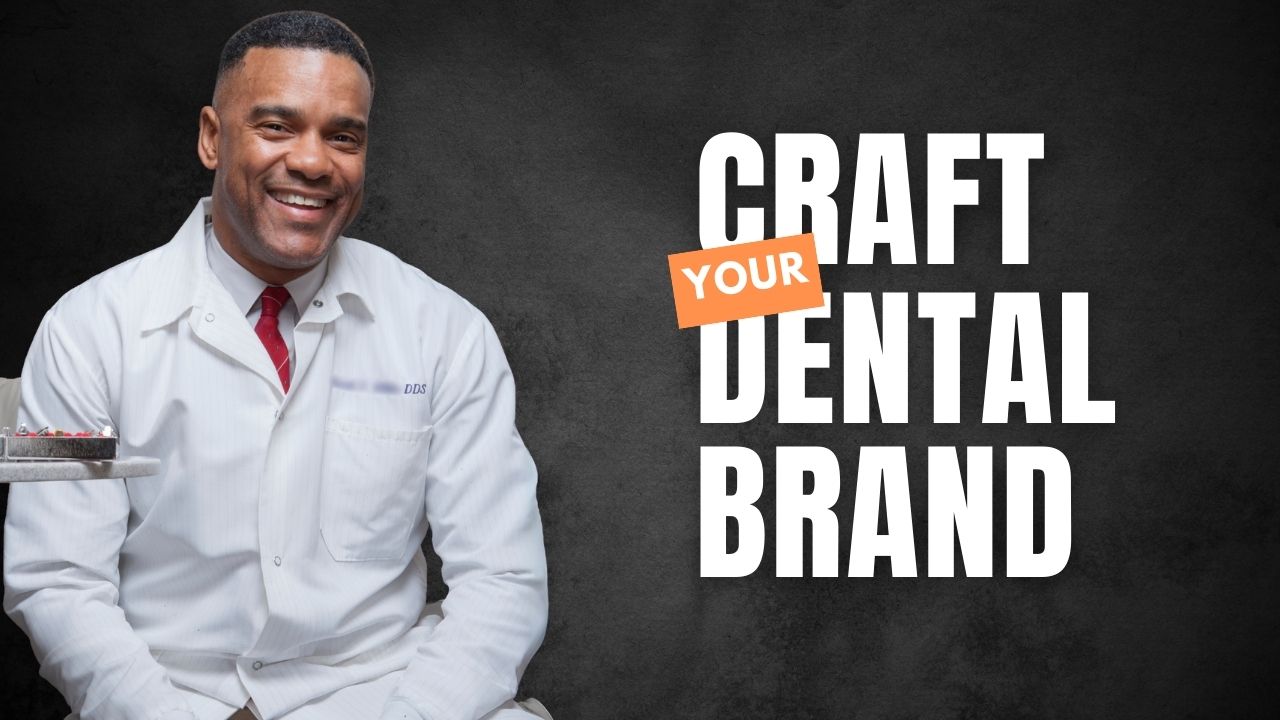Good communication skills are vital in any professional setting, but they are particularly crucial in a dental office due to the unique challenges and dynamics of the environment.
In this week’s blog, we’ll take a look at verbal communication, non-verbal communication, and written communication.
But first, let’s explore why it’s important to have good communication…
Why is it important to have good communication skills in the dental office?
There are several reasons why effective communication is essential in a dental practice. Here are six benefits of effective communication:
- Enhances patient care
- Increases patient satisfaction and retention
- Improves team coordination
- Improves conflict resolution
- Ensures compliance with regulations and standards
- Facilitates professional development
If you’re looking to manage stress in your dental office by enhancing your office communication skills, it's essential to focus on how you receive, understand, and respond to communication, and how you initiate it.
19 Tips for Verbal Communication in the Dental Office
Strong verbal communication is essential in a dental office to ensure clear, effective, and empathetic interactions with patients and team members.
Here are the key elements that contribute to strong verbal communication:
- Be clear: Use simple and straightforward language to convey your message. Avoid jargon or technical terms unless necessary, and provide explanations when using them.
- Be concise: Keep your messages short and to the point. Avoid unnecessary details that may confuse the listener.
- Organize your thoughts: Structure your communication logically, with a clear beginning, middle, and end. This helps the listener follow along and understand your main points.
- Listen attentively: Pay full attention to the speaker without interrupting. Show that you are engaged by nodding and maintaining eye contact.
- Provide feedback: Summarize or paraphrase what the speaker has said to ensure understanding and to show that you are actively listening. Ask clarifying questions if needed.
- Avoid interruptions: Allow the speaker to finish their thoughts before responding. This shows respect and allows for a more productive conversation.
- Show empathy: Express understanding and compassion for the speaker’s feelings and perspectives. Use phrases like “I understand how you feel” or “I can see why that’s important to you.”
- Be patient: Give the speaker time to express their thoughts and feelings without rushing them. Patience demonstrates that you value their input.
- Acknowledge emotions: Recognize and address the emotional aspect of the conversation, especially with patients who may be anxious or in discomfort.
- Use a positive tone: Maintain a friendly, calm, and professional tone. Avoid sounding rushed, annoyed, or condescending.
- Control your pace: Speak at a moderate pace, not too fast or too slow. This ensures that your message is understood and that the listener can follow along easily.
- Modulate your voice: Use appropriate intonation to emphasize key points and convey enthusiasm or concern where necessary. A monotone voice can be dull and disengaging.
- Seek feedback: Encourage the listener to ask questions or provide feedback. This helps ensure they have understood your message and allows for clarification if needed.
- Confirm understanding: Check for understanding by asking the listener to repeat back or summarize what you’ve said. This can prevent misunderstandings and ensure clarity.
- Provide constructive feedback: When giving feedback, be specific and focus on behaviors or actions rather than personal attributes. Use a balanced approach, highlighting both positives and areas for improvement.
- Adapt to your audience: Tailor your communication style to the needs of your audience. For example, use simpler language with children or non-experts, and more detailed explanations with colleagues or professionals.
- Be flexible: Be prepared to adjust your message or approach based on the listener’s reactions and feedback. Flexibility shows that you are responsive and considerate of their needs.
- Be cultural sensitivity: Be aware of and respectful towards cultural differences in communication styles. Adapt your communication to be inclusive and considerate of diverse backgrounds.
- Don’t be afraid: It's okay to say, “I don’t know.” Make sure to commit to finding out and following up.
Using the Compassion, Conviction, Optimism (CCO) Model
You might choose to use a model in your communication in the dental office. One such model is Compassion, Conviction, Optimism (CCO).
- Compassion: Share a statement demonstrating that you care and empathize.
- Conviction: Communicate in a way that demonstrates your commitment to helping, supporting, and solving the issue
- Optimism: Share encouragement with a (statement indicating a positive view of the future).
Share What’s Important
Staff members remember what they heard based on primacy and recency. That is, what they heard first, last, and in the middle.
But if you think about it, I’d bet you have trouble remembering what was said in the middle, right?
That’s why putting your most important message first and reiterating it at the end of your communication helps staff members remember what’s important and enhances understanding.
That’s a lot for verbal communication, but it doesn’t end there. Next, let’s talk about non-verbal communication.
Non-verbal Communication
Non-verbal communication plays a significant role in the dental office, complementing verbal interactions and often conveying messages more powerfully than words alone.
This includes body language, facial expressions, gestures, eye contact, and tone of voice.
Understanding and effectively utilizing non-verbal communication can enhance patient care, improve team collaboration, and create a positive work environment.
What to Do: Effective Non-Verbal Communication Practices
- Maintain eye contact: Establishing eye contact shows that you are attentive and engaged. It helps build a connection with patients and demonstrates confidence and sincerity.
- Use positive facial expressions: Smiling and maintaining a pleasant facial expression can put patients at ease and create a welcoming atmosphere.
- Be mindful of body language: Open body language, such as uncrossed arms and leaning slightly forward, conveys approachability and attentiveness. Ensure your posture is relaxed yet professional.
- Practice active listening: Show that you are listening by nodding, maintaining eye contact, and using appropriate facial expressions. This validates the speaker’s message and encourages further communication.
- Use appropriate touch: A gentle touch on the shoulder or a reassuring pat can provide comfort and convey empathy, especially in moments of patient anxiety or distress.
- Mirror the speaker: Subtly mirroring the speakers body language can create a sense of empathy and understanding, making them feel more connected and understood.
What to Avoid:
- Avoid negative facial expressions: Frowning, grimacing, or displaying impatience can make patients feel uncomfortable and judged. Always be conscious of your facial expressions.
- Do not cross our arms or legs: Crossed arms or legs can be perceived as defensive or closed-off. Instead, use open and welcoming body language to foster a more positive interaction.
- Avoid looking distracted: Glancing at your watch, phone, or around the room can make patients feel undervalued and ignored. Focus your attention on the person you are communicating with.
- Minimize unnecessary touch: While appropriate touch can be comforting, avoid excessive or inappropriate physical contact, which can make patients or colleagues uncomfortable.
- Watch your tone of voice: Your tone of voice can convey a wide range of emotions. Avoid sounding rushed, annoyed, or condescending. Strive for a calm, friendly, and professional tone.
- Avoid overuse of gestures: Excessive or exaggerated gestures can be distracting and may overwhelm the message you are trying to convey. Use gestures sparingly and purposefully.
Tips for Electronic Communication in the Dental Office
In today’s dental offices, electronic communication is a critical component of effective practice management.
Leveraging electronic communication tools can streamline operations, enhance patient care, and improve team collaboration.
Here are five tips to ensure strong electronic communication in your dental office:
- Use templates: Develop standardized email and message templates for common communications.
- Use clear, simple language: Use clear, simple language to ensure that patients and staff understand the messages.
- Use a structured format: Organize emails and messages with a clear structure, including a specific subject line, concise body text, and a call to action if needed. This helps recipients quickly grasp the essential information.
- Share documents: Use cloud-based document sharing platforms (like Google Drive or OneDrive) for easy access to important documents
Improve Communication
Dental practices can improve overall efficiency, patient satisfaction, and team collaboration through effective communication.
When your dental team communicates effectively, it reduces stress and makes everyone’s day go a little smoother.
What’s your favorite way of creating a supportive work environment in your dental office?
Related Articles

6 Self-Care Tips for Dental Professionals This Holiday Season
Here are a few self-care tips to help your dental office through this holiday season. Whether you're a dentist, hygienist, assistant, or front desk receptionist, you'll benefit from taking care of yourself this holiday season.
Chris Lewandowski
November 27, 2024
Ready to get started?
Join Princess Dental Staffing for free!

